


 |
 |
 |

 |
CIA PILOT KEN COLLINS |
 |

CALL SIGN: DUTCH 21
Colonel Kenneth S. Collins, Sr., USAF (Ret)


|
|
|
|
|
|
|
|
|
I was born in Leavenworth, Kansas, the home of Fort Leavenworth,
one of the oldest Army Posts of the new western frontiers. It was from here that
my grandfather, Sergeant Edward E. Collins of the 10th U. S. Cavalry, was sent
out with the Troopers to fight in the Battle of Wounded Knee.
Across the Missouri River from Fort Leavenworth is Park University where I
attended for two years and joined the Naval Air Reserves. During the summer of
1950, I applied for the Air Force pilot's training. I was sent to Goodfellow
AFB, Texas for Basic Flight Training in January 1951. I completed Advanced
Pilot's Training and was commissioned at Vance AFB, OK on 9 February 1952. In
late May 1952, I completed F-80 Jet Transition at Moody AFB, GA, volunteered for
Korea and was transferred to Shaw AFB, SC, 18th Tactical Reconnaissance Squadron
(Photo Jet) for Combat Crew Training School in the RF-80. I arrived at K-14 (Kimpo
Air Base, Korea) in mid August 1952. By March 1953, I had checked out in the
RF-80A, the F-80C and the RF-86A and had flown 118 combat missions while in the
15th Tactical Reconnaissance Squadron (The Cottonpickers). My new stateside
assignment was back to the 18th TRS at Shaw AFB, SC as an Instructor Pilot in
the RF-80 and the RF-84F. In October 1955, I was transferred to 10th TRWg, 38th
TRS at Spangdahlem Air Base, Germany as an Instructor Pilot and Flight Commander
in RF-80 and the RF-84F. In 1957, I was reassigned to the Military Advisory
Group (MAG) at Erding AB, Germany as an Instructor Pilot with the German Air
Force Waffenschule 50 (Weapons School 50). In 1959, I returned to Shaw AFB, SC
to the 20th TRS (RF-101) as a Flight Commander and Operations Officer. In 1960,
I was contacted by the USAF Office of NASA requesting that I volunteer for
testing for a classified space program. This evolved into the highly classified
A-12 Oxcart Program. My first flight in the A-12 was on 6 February 1963.
The A-12
|
|
|
|
 |
 |
 |
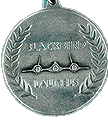 |
Flight Foundation. I received a BA from Chapman College, Orange, California. After Air Force retirement I took a managerial position with California Microwave, Inc/Government Electronics Division in Woodland Hills, California. Over the next nineteen years I served as a Program Manager of the classified RIVET KIT program (RC-130 aircraft), Business Development Director for the RC-135, Combat Sent (electronics reconnaissance) system and other reconnaissance systems and as Vice President and General Manager, retiring in 1998.
Click on images to enlarge
Follow the links below to read my account of how I was recruited into the CIA for Project Oxcart and about my training at Groom Lake to fly the A-12.
|
|
|
|
On 24 May 1963 - near Wendover, Utah. I was flying "a subsonic J-58 engine test flight at 25,000 feet altitude with Jack Weeks as the F-101 Chase pilot. In my turn back to base we ran into heavy clouds and rain. Trying to get above the weather, I climbed up to 30,000 , but was still in the heavy clouds. I waved Weeks off, because of the dense clouds and turbulence. (The F-101 was prone to pitch-ups in slow flight). All cockpit instrument readings appeared to be normal, but the flight controls were slow responding. Rechecking all the instruments, I saw the altimeter beginning to rapidly "wind" down as did the airspeed indicator. Having no visual references in the clouds, I was uncertain of my true altitude and airspeed; the flight instruments were unreliable. Within seconds the airspeed decreased to 102 KIAS. Then the A-12 stalled and pitched up and over into an unrecoverable flat inverted spin. Having no positive idea of my real altitude, I choose to eject from the inverted aircraft. (It was eventually determined by Norm Nelson that . My pilot packet was lost during ejection, causing an extensive search on horseback to recover the packet of money and documents. A cover story for the press described the accident as occurring to an F-105 and is still listed in this way on official records.
CIA documentation of this accident
![]()
"EVERY MAN A TIGER"
"The Cottonpickers"
14 February 1953, 1st Lt. Ken Collins, 67th
Tactical Reconnaissance Wing, 15th Tactical Reconnaissance Squadron, "Cottonpickers"
K-14, Kimpo, Korea. A flight of two RF-86A's let by Captain Dan Nelson with 1st
Lt. Ken Collins on wing had the mission of marking 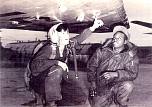 the
target for F-80 Fighter bombers and strafing the North Korean radar site on a
hill north of Pyongyang. The first low pass was uneventful despite the moderate
ground fire, but the F-80 bombers did not locate the target. A second pass was
called for with Nelson in lead and Collins in trail. Nelson came in so low that
I had to cease firing my guns until he passed the target and pulled up. I stayed
low and strafed the target. The ground fire was heavy and I was in trail.
the
target for F-80 Fighter bombers and strafing the North Korean radar site on a
hill north of Pyongyang. The first low pass was uneventful despite the moderate
ground fire, but the F-80 bombers did not locate the target. A second pass was
called for with Nelson in lead and Collins in trail. Nelson came in so low that
I had to cease firing my guns until he passed the target and pulled up. I stayed
low and strafed the target. The ground fire was heavy and I was in trail.
|
|
As I passed the target, there was a heavy jolt to the RF-86. The aircraft jerked violently to the left. Fighting the controls to stay upright, I checked my left wing. The left Wing was totally obscured by a cloud of fuel. What appeared to be something wrapped up and over the leading edge slat was torn metal. I called my Lead telling him that I had been hit and was west of the target area.... His response was "Roger".
The left wing became visible because all of the fuel was sucked out. The left external fuel tank had been hit and exploded wrapping over the leading edge of that wing restricting the movement of the wing slat. Fuel was still pouring out of the holes in the internal wing fuel cell. I attempted to fly toward the
Yellow Sea in case of ejection. I could not maintain control or altitude with the drag on the left wing, so I quickly punched the External Stores Ejection button hoping to get rid of both external fuel tanks. I rapidly kicked the left and right rudders to yaw trying to shake off that damaged left tank. This about rolled the aircraft over, but it worked. The damaged fuel tank slid off the left wing giving back some control. Jettisoning the external fuel tanks and the punctured left wing tank left me with very little useable fuel. I was still north of the "Bomb Line" and west of Pyongyang. The RF-86 was now controllable and I headed south. After crossing the "Bomb Line" and having K-14 in sight, I tried some slow flight near stall to insure that the aircraft was controllable during final approach and touchdown. I called the Control Tower for a straight in emergency landing. The damaged left slat/wing peeled off early just prior to touchdown. Made for a sloppy touchdown. After taxiing in and shutting down the engine, I was met by Colonel (then Major) Houser Wilson, Squadron Commander. He said that Captain Nelson had reported me being shot down north of Pyongyang. Needless to say, we both headed for the bar. That RF-86A was never to fly again because of the damage.
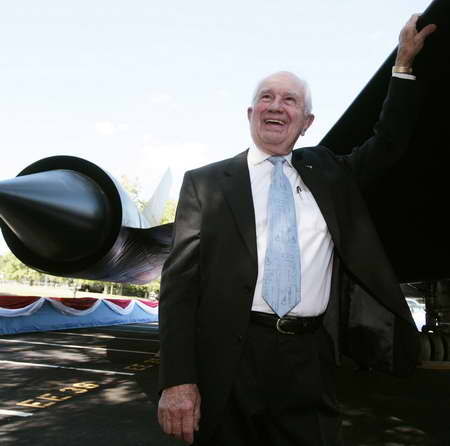 |
CIA 60TH ANNIVERSARY - 19 September 2007 Colonel Ken Collins Honoree at the A-12 Article 128 Dedication 9-19-2007 - Former A-12 pilot Ken Collins poses after the presentation ceremony of a decommissioned, formerly top-secret A-12 aircraft to the agency in the parking lot of the CIA Headquarters in McLean, Virginia, September 19, 2007. The presentation was part of the agency's 60th anniversary celebration. Director Hayden's speech can be read at this link: SPEECH Click here for Dedication Video |
2007 - Ken Collins Inducted into Kansas Military Hall of Fame |
|
|
November 2016 enshrinement into the Nevada Aerospace Hall of Fame


5 November 2016 enshrinement into the Kansas Aviation Hall of Fame
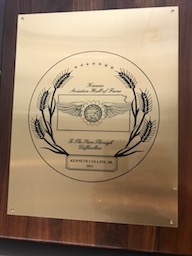
 Ken on stage in front of 500 Air Command and Staff College students |
 Ken with General "Doc" Bahnsen |
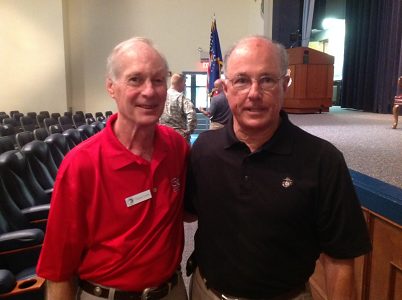 Jim Griffin with Lt Tom Norris, US Navy Seal, of BAT 21 fame |
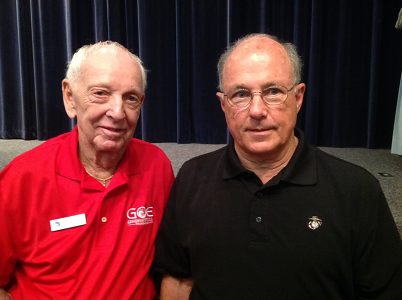 Al Haynes, DC-10 Captian |
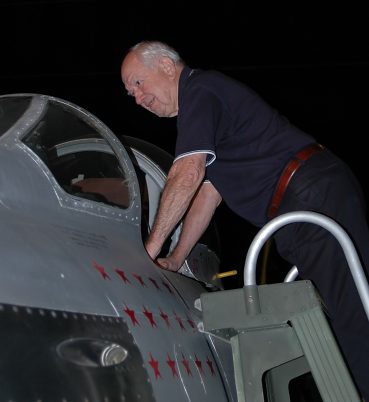 Ken looking in the cockpit of the F-86 |
 |
 |
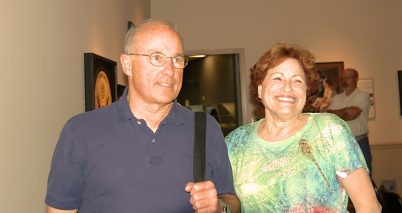 Jim Griffin & Sandy Collins |
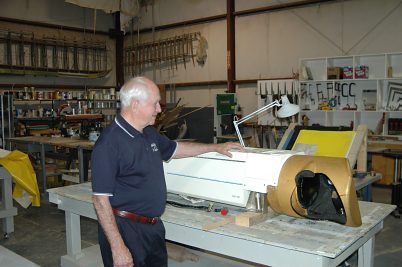 TEOC camera from the SR-71 |
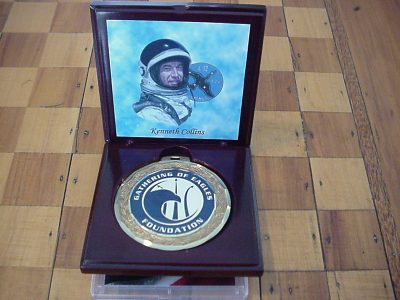 |
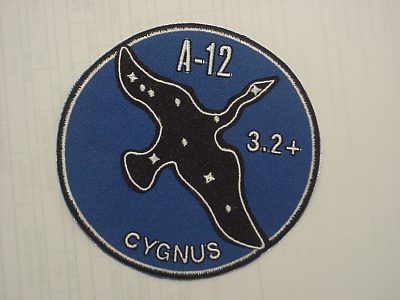 |
 |
|

IN REMEMBRANCE OF
JANE BINGHAM COLLINS
Jane Collins was born in Starkville, Mississippi on July 29,
1933. Her siblings are Wanda Sipes (Deceased) of Memphis, Tennessee, Joy Swift
of Midland, Texas, Connie Harrell of Phoenix, Arizona, Everett Bingham, Jr. of
Cotter, Akansas and Mahaska Whitley, Tallhassee, Florida. Her father, Everett F.
Bingham resides in Phoenix, Arizona. Her mother, Wilma Snavely Bingham is
deceased.
Jane attended the University of Texas.
Jane married Colonel Kenneth S. Collins Sr., USAF (Ret) on March 23, 1952. She had four children - Sharon Lee, Kenneth S., Mark T., and
Melissa Jane.
on March 23, 1952. She had four children - Sharon Lee, Kenneth S., Mark T., and
Melissa Jane.
Throughout her life she has raised four children, supported her husband's career
in the United States Air Force and the intelligence industry, relocating her
family as the assignments dictated from San Angelo. Texas, to Sumter, South
Carolina, Spangdalem and Munich, Germany, returning to South Carolina and again
relocating to the Los Angeles and the Sacramento area of California. She is a
resident of Austin, Texas and has a home in Newport Beach, California. Through
all of this she had evolved into a wonderful woman.
During these fifty four years as a mother and wife, she has become a superb
"chef", an expert in fine antique china and crystal, and interior
decorator and an amazing woman. She was a member of the Woodland Hills Women's Club.
woman. She was a member of the Woodland Hills Women's Club.
Ken
 The aviation community is saddened by the passing of Colonel Kenneth S. Collins, Sr., USAF (Ret). Known in the CIA and Air Force aerial reconnaissance communities by his callsign, Dutch 21, former CIA A-12 and Air Force SR-71 Blackbird pilot Ken Collins suffered a sudden heart attack and took his final flight on 3 May 2022 at his home in Prescott, Arizona.
The aviation community is saddened by the passing of Colonel Kenneth S. Collins, Sr., USAF (Ret). Known in the CIA and Air Force aerial reconnaissance communities by his callsign, Dutch 21, former CIA A-12 and Air Force SR-71 Blackbird pilot Ken Collins suffered a sudden heart attack and took his final flight on 3 May 2022 at his home in Prescott, Arizona.
Colonel Collins was born in Leavenworth, Kansas, the home of Fort Leavenworth, one of the oldest Army Posts on the new western frontiers. From here, his grandfather, Sergeant Edward E. Collins of the 10th U. S. Cavalry, fought in the Battle of Wounded Knee.
Across the Missouri River from Fort Leavenworth is Park University, where he attended for two years and joined the Naval Air Reserves. During the summer of 1950, he applied for the Air Force pilot's training. He was sent to Goodfellow AFB, Texas, for Basic Flight Training in January 1951. he completed Advanced Pilot's Training and was commissioned at Vance AFB, Oklahoma, on 9 February 1952. In late May 1952, he completed the F-80 Jet Transition at Moody AFB, Georgia, volunteered for Korea, and was transferred to Shaw AFB, South Carolina, 18th Tactical Reconnaissance Squadron (Photo Jet) for Combat Crew Training School in the RF-80. He arrived at K-14 (Kimpo Air Base, Korea) in mid-August 1952. By March 1953, he had checked out in the RF-80A, the F-80C, and the RF-86A and had flown 118 combat missions while in the 15th Tactical Reconnaissance Squadron (The Cottonpickers). His new stateside assignment was back to the 18th TRS at Shaw AFB, SC as an Instructor Pilot in the RF-80 and the RF-84F. In October 1955, he was transferred to 10th TRW, 38th TRS at Spangdahlem Air Base, Germany, as an Instructor Pilot and Flight Commander in RF-80 and the RF-84F. In 1957, Collins joined the Military Advisory Group (MAG) at Erding AB, Germany as an Instructor Pilot with the German Air Force Waffenschule 50 (Weapons School 50).
In 1959, Collins returned to Shaw AFB, SC, to the 20th TRS (RF-101) as a Flight Commander and Operations Officer. In 1960, the USAF Office of NASA requesting that he volunteer for testing for a classified space program. This evolved into the highly classified A-12 Oxcart Program at Area 51 in Nevada. His flew his first A-12 flight on 6 February 1963. The A-12 experimental test phase lasted through the first months of 1967, followed by the operational deployment to Okinawa, where he flew six A-12 combat missions over Vietnam, earning the Distinguished Flying Cross and the Central Intelligence Agency's Intelligence Star for Valor. When the CIA's A-12 program ended, Collins returned to the USAF at the 9th Strategic Reconnaissance Wing (SAC) at Beale AFB, CA, to fly the SR-71 "Blackbird," where he became the 99th Strategic Reconnaissance Squadron Operations Officer, an Instructor Pilot, and Test Pilot in the SR-71. When promoted to lieutenant colonel in 1970, he served as the 1st SRS Commander, and after promotion to colonel, became the 9th SR Wing Deputy Commander for Operations in 1972. Two years later, he received reassignment to Headquarters, 15th Air Force, March AFB, California, and retired as Deputy Chief of Intelligence in 1980.
Military Awards: Silver Star, Intelligence Star, Legion of Merit, three Distinguished Flying Crosses, three Air Medals, United Nations Service Medal, Korean Service Medal, Viet Nam Service Medal. Collins was a Society of Experimental Test Pilots and the Edwards AFB Historical Test Flight Foundation member. He received a BA from Chapman College, Orange, California. After his Air Force retirement, he took a managerial position with California Microwave, Inc/Government Electronics Division in Woodland Hills, California. Over the next nineteen years, he served as a Program Manager of the classified RIVET KIT program (RC-130 aircraft), Business Development Director for the RC-135, Combat Sent (electronics reconnaissance) system, and other reconnaissance systems, and as Vice President and General Manager, retiring in 1998. Collins was inducted into both the Kansas and Nevada Aviation Hall of Fame.
Collins is survived by his spouse, Sandy, and four children: Sharon Lee, Kenneth S., Mark T., and Melissa Jane.
 |
 |
 |